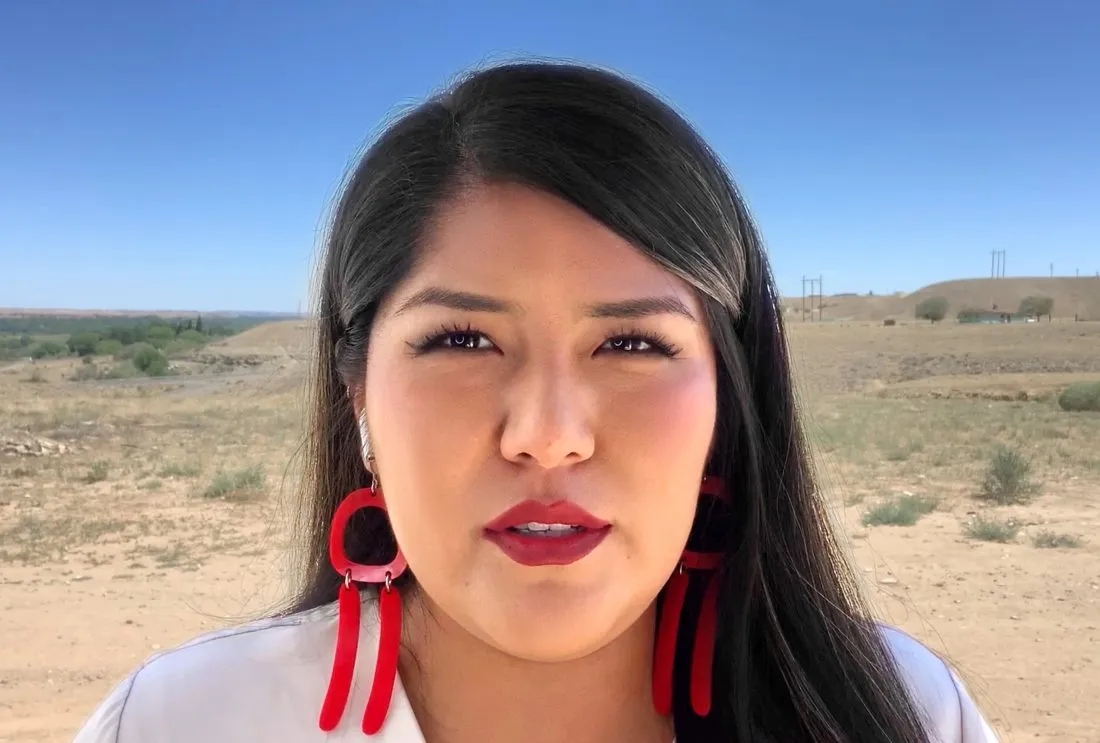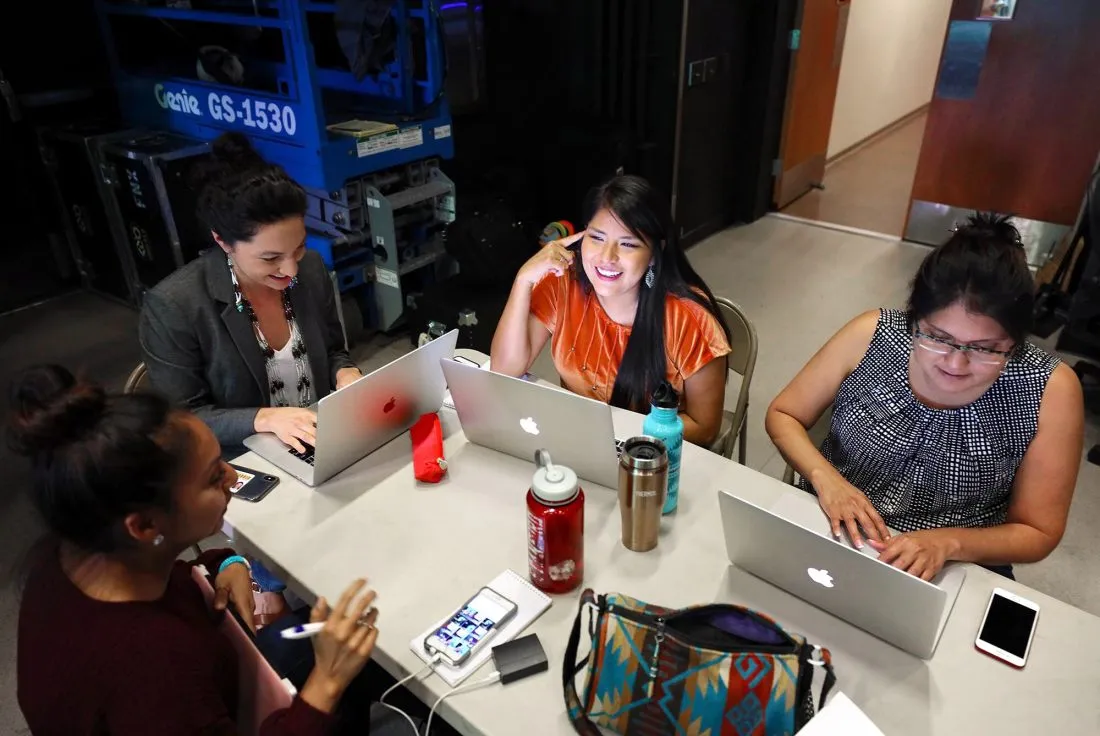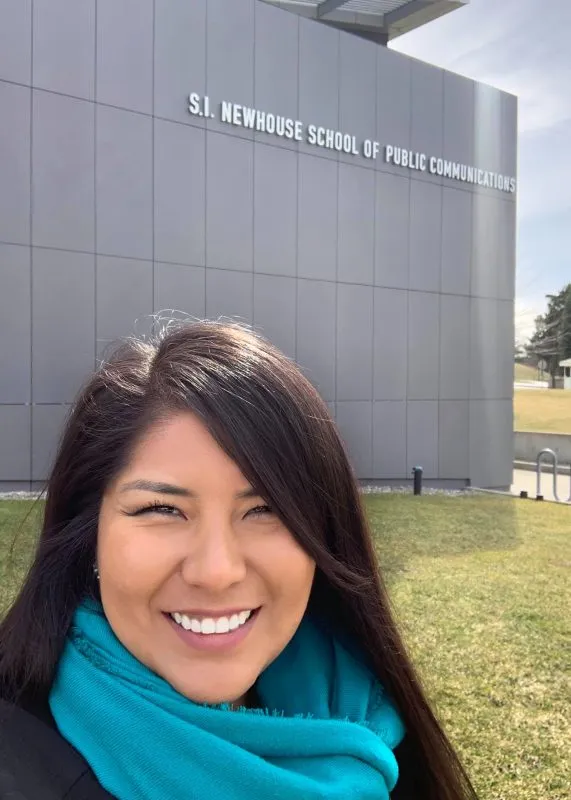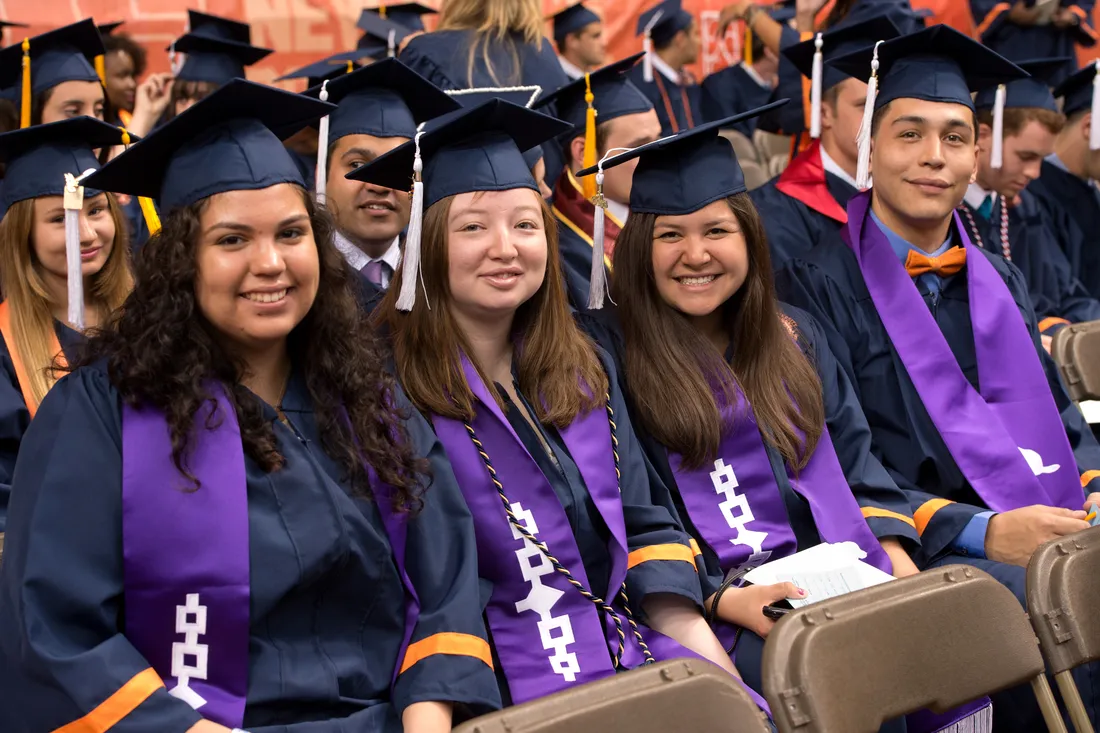
Jourdan Bennett-Begaye G’16 grew up in New Mexico and earned a master’s degree from the S.I. Newhouse School of Public Communications. She is the managing editor of Indian Country Today.
Jourdan Bennett-Begaye G’16 is right where she wants to be. As managing editor of Indian Country Today, the Syracuse University alumna has an influential role in addressing topics important to the Indigenous peoples of the Americas and creating a narrative that is their own. It’s also a leadership position that she believes she was meant for—a way to represent and honor her family and ancestors. “It’s amazing. I wake up and think, ‘How can I help my community?’ And being part of something bigger than yourself—it’s just beautiful, and it’s so powerful,” says Bennett-Begaye, a Diné (Navajo) citizen who holds a master’s degree from the S.I. Newhouse School of Public Communications .
Bennett-Begaye joined Indian Country Today in 2018 as a reporter-producer and served as its Washington, D.C., bureau chief and deputy managing editor before assuming her current role in February. She says she has grown professionally with the organization, which has undergone several transformations from its origins as a newspaper in the 1980s to its 2018 relaunch as a nonprofit, multimedia news enterprise headquartered at the Walter Cronkite School of Journalism and Mass Communication at Arizona State University in Phoenix. “I think the growth of this organization is a pure example of Indigenous excellence and brilliance,” says the Washington, D.C.-based journalist.
I wake up and think, ‘How can I help my community?’ And being part of something bigger than yourself—it’s just beautiful, and it’s so powerful.
Jourdan Bennett-Begaye G’16
One issue at the forefront of Bennett-Begaye’s mind has been the number of COVID-19 deaths and cases among Native Americans. When the pandemic broke out last year, she pursued information on cases through the Indian Health Service and other sources and began building a database, but she often found the data to be inconsistent and difficult to acquire. Eventually, she connected with the Johns Hopkins University COVID-19 global mapping team through the university’s Center for American Indian Health, and the team began tracking information—as best it could—on Native communities. Through a North American network called the Indigenous Investigative Collective, Bennett-Begaye was part of a reporting team that tackled the issue in depth and published an exposé in early June 2021. “Broken system can’t keep track of Native deaths,” read the headline in Indian Country Today.
Bennett-Begaye’s work has also extended into the national political arena. She’s interviewed presidential candidates, covered the inauguration of President Biden L’68, H’09, and participated in Indian Country Today’s live TV coverage of the 2018 midterm and 2020 elections. The 2018 broadcast saw the first two Native women elected to Congress—Sharice Davids of Kansas and Deb Haaland of New Mexico, who is now U.S. secretary of the interior—and led to the creation of the first national TV newscast focused on American Indians and Alaska Natives, which is carried by public stations. “Being in front of that camera talking on live TV with Native candidates and informing Indian Country, essentially my community, was phenomenal,” she says, noting that she lost a grandparent around the time of each of those elections. “I overcame my nerves of going on live TV both times by imagining my grandparents—and family—on the other side watching and listening to me, telling them our stories.”
With a background in public health administration, Jourdan Bennett-Begaye G’16 created a real-time COVID-19 database that tracked the number of cases, tests, vaccinations and deaths among Native American communities, the first database of its kind to benefit Indigenous people.
Listen Now
Reporters (left to right) Aliyah Chavez, Tsanavi Spoonhunter and Jourdan Bennett-Begaye join social media guru Jaynie Parrish as they go over Indian Country Today’s 2018 election plans the day before the first live Native Election Night. Photo by Eugene Tapahe/Tapahe Photography.
Discovering Journalism and Syracuse
Bennett-Begaye, who grew up in Kirtland, New Mexico, was a competitive volleyball player and earned a bachelor’s degree in athletic training with a minor in English communication from Fort Lewis College in Colorado. She envisioned becoming a physician’s assistant and landed a highly competitive internship with the Future Public Health Leaders Program, a Centers for Disease Control and Prevention-funded initiative. But her love of writing and storytelling pointed her more toward journalism than medicine. Through the American Indian Journalism Institute, she received training and held a summer internship with New Mexico’s Farmington Daily Times . After graduation, she was awarded a fellowship by the Native American Journalists Association (NAJA) that provided intensive multimedia training. “The fellowship really helped me decide that journalism’s for me, and I thought, ‘I need to find a grad school,’” she says.
Although Syracuse is a huge university, it seemed small to me, and I felt like I had a family at Newhouse. That was the type of environment I needed.
Jourdan Bennett-Begaye G’16
With that thought, Bennett-Begaye zeroed in on a business card tacked to a corkboard in her bedroom. The card was given to her by Tammy Bluewolf-Kennedy ’04, G’10, an admissions counselor and Native American liaison at Syracuse University. The two had met in Albuquerque at the annual Gathering of Nations, the largest powwow in North America, and when they reconnected there a year later, Bennett-Begaye told Bluewolf-Kennedy that she had applied to the Newhouse School’s magazine, news and digital journalism program. She was awarded a prestigious Newhouse Graduate Newspaper Fellowship for Minorities , which, along with the presence of a strong Indigenous community, led her to Syracuse. “I enjoyed my time there. I loved it,” she says. “Although Syracuse is a huge university, it seemed small to me, and I felt like I had a family at Newhouse. That was the type of environment I needed.”

In April 2019, Bennett-Begaye returned to Syracuse as a guest panelist for the Newhouse School’s Race and Media Symposium.
Bennett-Begaye remains appreciative of Newhouse faculty for their support and guidance and cites serving as managing editor for her magazine capstone project for helping her develop skills that she uses today. As part of her fellowship, she interned with The Post-Standard /Syracuse.com, where her most meaningful assignment—one that she insisted on covering—was reporting from Standing Rock on the Dakota Access Pipeline movement. It was an issue she addressed as a guest panelist for Newhouse’s Race and Media Symposium in April 2019.
She also found a home with the University’s Native Student Program , through which she connected with the Haudenosaunee community on campus and hung out at the Onondaga Nation, forging friendships along the way. She and several other students co-founded the Haudenosaunee Student Alliance and were instrumental in advocating for the University to officially recognize Indigenous Peoples Day. She’s also helped Bluewolf-Kennedy with high school recruiting visits in New Mexico. “Jourdan became—and still is—a vibrant part of our Indigenous community,” Bluewolf-Kennedy says. “She is a powerful, spirited, resilient, trailblazing Indigenous woman!”
Giving Back to Her Community
After graduation, Bennett-Begaye returned to New Mexico, where she taught journalism, theater and video production at her alma mater, Kirtland Central High School. It was also a way for her to give back to her community—a constant in her life. She’s coached volleyball and worked with Indigenous youth programs, and in 2014 she and her friend Allie Young co-founded Survival of the First Voices Festival. This arts and culture event has helped Native youth learn to use art and media as a way to preserve their culture, represent their identities and build a sense of pride in being Indigenous. “We saw this need in our community, and we both loved the arts,” she says.
That sense of community has been with Bennett-Begaye throughout her life. She attributes it to K’é , the idea of kinship that is central to the Diné society. It’s about helping family and community, and being kind, generous and compassionate, she says. “It’s an all-encompassing word in two letters.”
Bennett-Begaye carries that sense of purpose with her. The former NAJA Fellow is now a member of the organization’s board of directors. And she’s dedicated to creating opportunities and providing resources and support for the next generation of journalists. “I love the organization so much, and they’ve helped me get to where I am,” she says.
Jourdan became—and still is—a vibrant part of our Indigenous community. She is a powerful, spirited, resilient, trailblazing Indigenous woman!
Tammy Bluewolf-Kennedy ’04, G’10
Bluewolf-Kennedy is proud that Bennett-Begaye has emerged as an influential leader, knowing that she will make a difference. “In her position at Indian Country Today, Jourdan helps elevate our collective Indigenous voice and bring our stories into the mainstream,” Bluewolf-Kennedy says. “For all that Jourdan is, for all that she’s already accomplished in her young life, for the example she’s setting for the Indigenous youth coming after her, I delightedly hold her up as the kind of Indigenous mover and shaker our youth can aspire to!”


